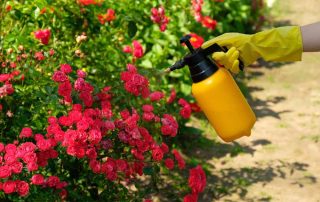Protecting Commercial Landscaping in August Heat
Pugh's Earthworks August is here, and with it comes the sizzling summer heat that can take a toll on commercial landscapes. For commercial landscapers, property managers, and outdoor service providers, maintaining a lush, healthy landscape during the hottest month of the year is no small feat. But fear not! Pugh's Earthworks Certified Commercial Landscaping has got you covered with strategies for Protecting Commercial Landscaping in August Heat. In this comprehensive guide, we will discuss proven tips and techniques for heat-tolerant landscaping, effective commercial lawn care, and practical methods for protecting plants during the summer months. By the end of this post, you will have a clear understanding of how to keep your commercial landscape in pristine condition, even when temperatures soar. Understanding the Challenges of August Heat August heat presents unique challenges for commercial landscapes. The intense sunlight, high temperatures, and lack of rainfall can lead to stressed plants, dry soil, and increased pest activity. These factors can quickly turn a once-thriving landscape into a dry, brown mess if not properly managed. The Impact of High Temperatures - High temperatures can cause significant stress to plants, leading to wilting, scorched leaves, and stunted growth. It's essential to choose heat-tolerant plants and implement effective cooling strategies to mitigate the impact of extreme heat. The Role of Soil Moisture - Maintaining adequate soil moisture is crucial during hot summer months. Dry soil can lead to root dehydration, making plants more susceptible to heat stress. Regular watering and proper mulching can help retain soil moisture and keep plants healthy. Pest and Disease Pressure - Hot weather can create favorable conditions for pests and diseases. It is important to monitor your landscape regularly and take proactive measures to prevent infestations and outbreaks. Selecting Heat-Tolerant Plants - Choosing the right plants for your commercial landscape is the first step in creating a heat-resistant environment. Opt for native or drought-resistant species that can thrive in high temperatures with minimal water. Native Plants - Native plants are adapted to the local climate and soil conditions, making them more resilient to heat stress. They require less water and maintenance, making them an excellent choice for commercial landscapes. Drought-Resistant Species - Plants like succulents, ornamental grasses, and certain types of shrubs are naturally drought-resistant and can withstand prolonged periods of heat. Incorporating these species into your landscape can reduce the need for frequent watering. Shade-Loving Plants - Strategically planting shade-loving plants under trees or in shaded areas can help protect them from direct sunlight and reduce heat stress. Ferns, hostas, and impatiens are great examples of shade-tolerant plants. Watering Strategies for Hot Summers - Proper watering is crucial to keep your commercial landscape healthy during the summer heat. Implementing efficient watering techniques can ensure your plants receive the right amount of moisture without wasting water. Early Morning Watering - Watering early in the morning allows plants to absorb moisture before the day's heat intensifies. It also reduces evaporation, ensuring more water reaches the roots. Aim to water between 5 AM and 9 AM for the best results. [...]

